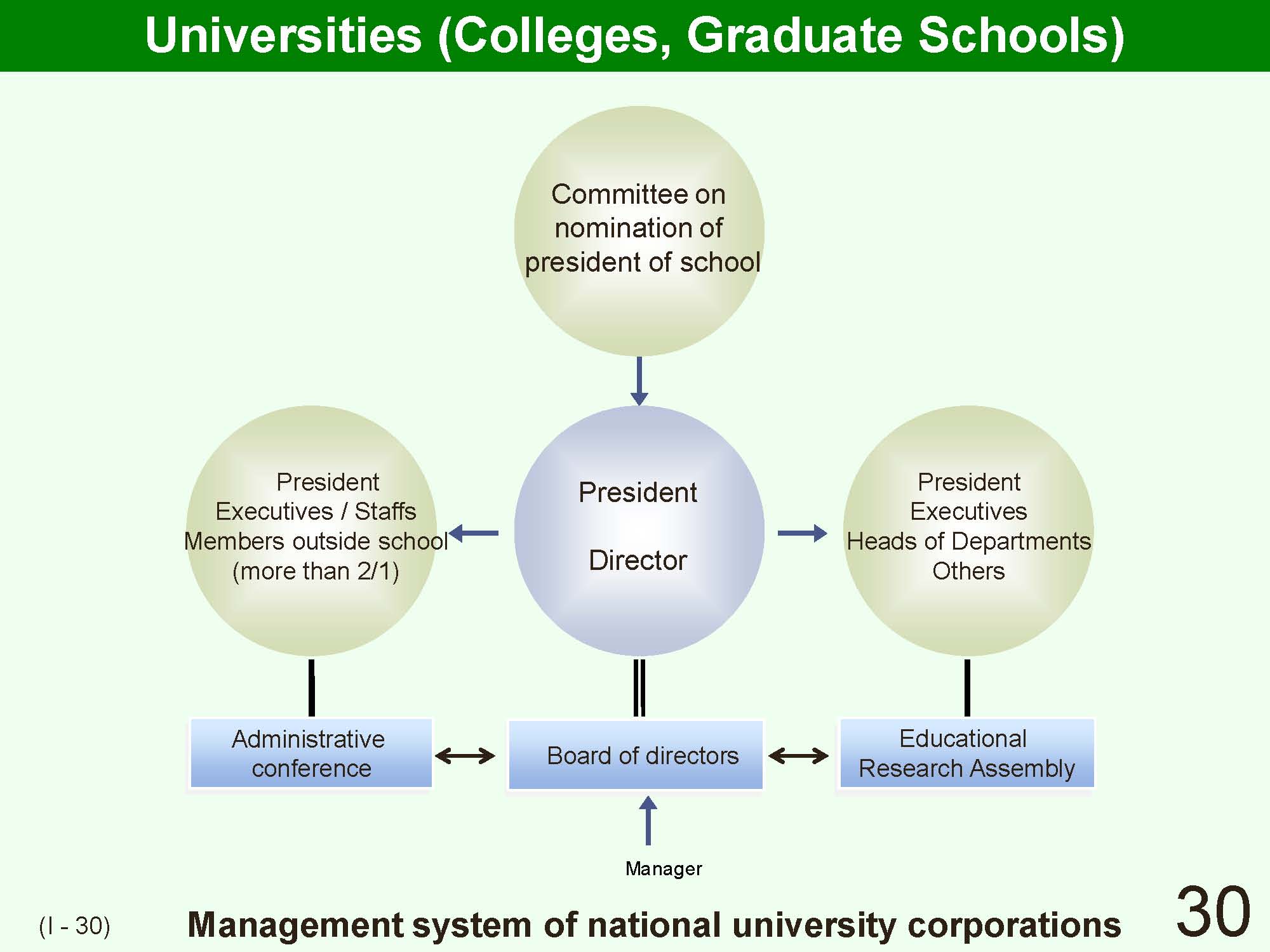| 30 | gI Outline of Japanese School Systemh | Previous | Next | JAPANESE |
|---|---|---|---|---|
 |
||||
| Until recently, there were three forms of universities in Japan, national, public and private (incorporated educational institutions), and their legal characteristics were clearly distinguishable. However, under evolving national reforms concerning administration and finance, reducing the number of teachers, improving the quality of universities, and make the allocation of state funds became major tasks. After April 2004, all national universities changed their mode of establishment and currently are now structured as enational university corporationsf. Their management has become similar to that of private universities to the extent that educational personnel are no longer considered as public servants and the university accounting systems have changed to that of enterprises.
The management of the incorporated national universities is left to directors under the leadership of the university president. Participation by outside members is substantial, as they account for more than half of the members in the supervision and administrative conference. As a result of this change, management by efaculty meeting,f decision-making bodies that used to have authority over university personnel and financial affairs as well as educational research, will undergo change. The autonomous management by incorporated institutions involves setting a target and a plan every six years. However, there are some misgivings about the relationships and interactions between the Ministry of Education, Culture, Sports, Science and Technology on the one hand, and the university corporations, particularly with regards to management capacities. |
||||
Please send your comments and concerns here
kamada@criced.tsukuba.ac.jp
Center for Research on International Cooperation in Educational Development(CRICED) University of Tsukuba
1-1-1, Tennodai, Tsukuba-shi, IBARAKI
305-857, JAPAN